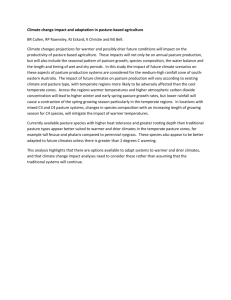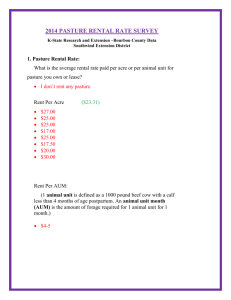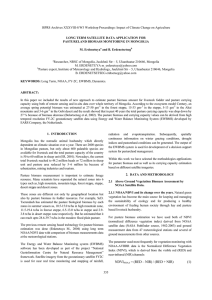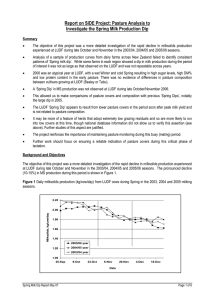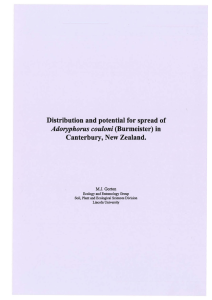Document 11842192
advertisement
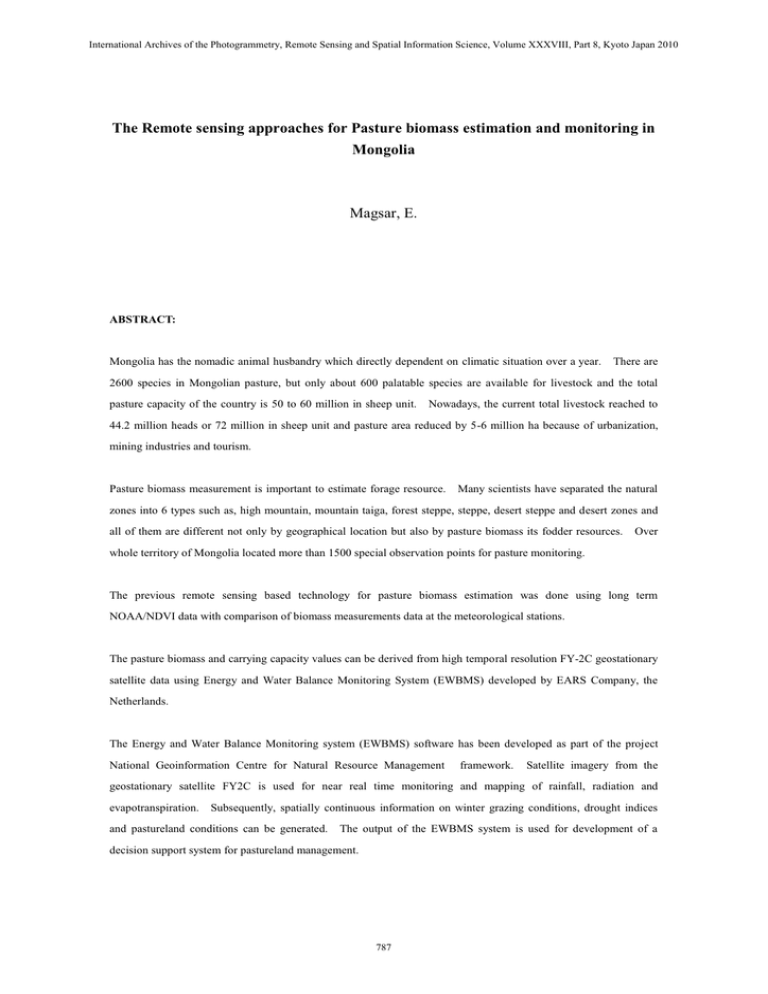
International Archives of the Photogrammetry, Remote Sensing and Spatial Information Science, Volume XXXVIII, Part 8, Kyoto Japan 2010 The Remote sensing approaches for Pasture biomass estimation and monitoring in Mongolia Magsar, E. ABSTRACT: Mongolia has the nomadic animal husbandry which directly dependent on climatic situation over a year. There are 2600 species in Mongolian pasture, but only about 600 palatable species are available for livestock and the total pasture capacity of the country is 50 to 60 million in sheep unit. Nowadays, the current total livestock reached to 44.2 million heads or 72 million in sheep unit and pasture area reduced by 5-6 million ha because of urbanization, mining industries and tourism. Pasture biomass measurement is important to estimate forage resource. Many scientists have separated the natural zones into 6 types such as, high mountain, mountain taiga, forest steppe, steppe, desert steppe and desert zones and all of them are different not only by geographical location but also by pasture biomass its fodder resources. Over whole territory of Mongolia located more than 1500 special observation points for pasture monitoring. The previous remote sensing based technology for pasture biomass estimation was done using long term NOAA/NDVI data with comparison of biomass measurements data at the meteorological stations. The pasture biomass and carrying capacity values can be derived from high temporal resolution FY-2C geostationary satellite data using Energy and Water Balance Monitoring System (EWBMS) developed by EARS Company, the Netherlands. The Energy and Water Balance Monitoring system (EWBMS) software has been developed as part of the project National Geoinformation Centre for Natural Resource Management framework. Satellite imagery from the geostationary satellite FY2C is used for near real time monitoring and mapping of rainfall, radiation and evapotranspiration. Subsequently, spatially continuous information on winter grazing conditions, drought indices and pastureland conditions can be generated. The output of the EWBMS system is used for development of a decision support system for pastureland management. 787 International Archives of the Photogrammetry, Remote Sensing and Spatial Information Science, Volume XXXVIII, Part 8, Kyoto Japan 2010 In this paper we included the results of new approaches to estimate pasture biomass amount for livestock fodder and pasture carrying capacity using of remote sensing with comparison of in-situ data over whole territory of Mongolia. 788





